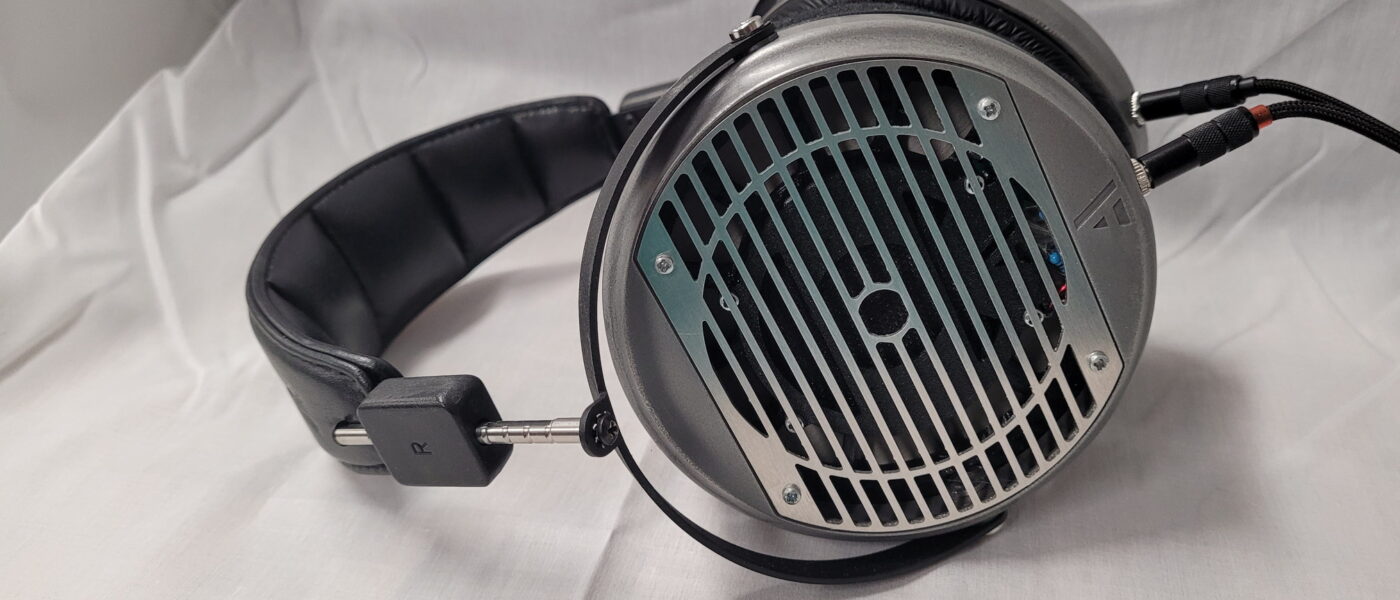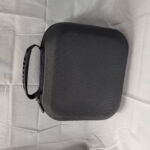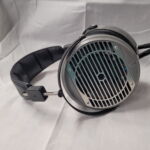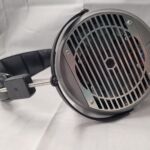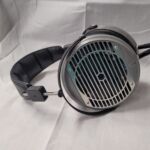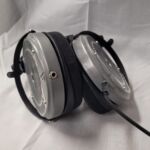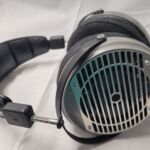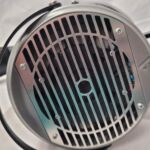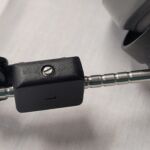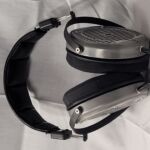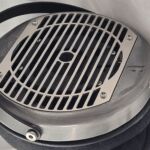QT – Auribus Everest
disclaimer: I met Juan Auribus at THE Show this past June and had a chance to try the pre-release Everest during that time. Unfortunately, those environments are poor places to really get an idea of what an open-back headphone can do as their are always conversations going on and other noises as papers shuffle, traffic passes etc… Juan was nice enough to send me the same pre-release sample so I could spend a week with it in my listening room. I have no financial interest in Auribus Audio, nor have I received any remuneration for this review.
Please understand that since this is a pre-release build, some things about it may be slightly different than the final version but I am assured the tuning is the final version if some minor physical elements may vary slightly.
Unboxing / Packaging:
I can’t report much here as the sample I received was in a large hard case with carry handle for travel and not in its retail packaging. The package arrived with the headphone, case, and cable only.
Build/Fit:
The build is quite interesting as it borrows from some of the best designs with the headband design and adjustments looking suspiciously like an Audeze headband. The gimbals are simple but well made and there is little to no plastic anywhere to be found. What is most unique about the design is the resin-cast aluminum cups with polished aluminum outer grills. You’d be forgiven for thinking it was 3d printed as at first glance it does look like it could be but the epoxy impregnated with aluminum powder is much stronger without adding much additional weight. Connections are 3.5mm ports at the bottom of each cup. On the beta, they are pointed straight downward. The provided cable is cloth (nylon wrapped) and should prove as durable as the headphone itself. Comfort is quite good as the headband is well padded as are the Dekoni velour pads. This combined with moderate weight and mild clamping force make for a headphone that can be worn for extended periods without fatigue.
Internals:
The heart of the Everest is a 50mm paper/PET composite dynamic driver that Juan has worked with Peerless to develop and tune to his liking. Nominal impedance is listed at 20Ω with a sensitivity of 94 dB/mW (both measured at 1kHz). I had no trouble driving the Everest with a variety of sources and it seemed equally at home with everything from the Cayin N3 and DACPort HD through potent amps like the Pass HPA-1 and Xduoo Ta-26. Under other circumstances, I would include pictures of the drivers but was asked not to as they might not reflect exactly what the final product will look like.
Sound:
Bass:
Sub-bass has good extension and definition with roll-off only becoming evident in the lower 20Hz range where notes begin to take on a more vibration than sonic quality. Mid-bass is also tightly defined with good texture and speed and plenty of slam when called upon but no bleed or intrusion when it isn’t in a starring role. The bass has enough authority to make itself known but enough speed and control to provide a near reference sound even with the overall shallow V-tuning of the Everest.
Mids:
The lower mids do step back slightly from the bass but not excessively and I know this is an area Juan was working on tuning even during THE Show with changes made between the times we heard it. The mids are now more forward than the original tuning I heard and I prefer this newer tuning. Lower voices have good weight and stand just slightly ahead of the instrumentation. Guitar has enough rasp to sound natural and the driver speed helps with fast transients keeping notes from lingering longer than they should. The mids move forward as they move toward the treble with female vocals being a step ahead of lower voices and have a bit more energy but not so much as to become nasal or strident.
Treble:
Soundstage / Imaging:
This is the real strong suit of the Everest. The stage is wide, deep, and with good height. It was among the best I heard at THE Show and even at home where I had some heavy hitters like the HD800, LCD-4, and He6, the stage dimensions on the Everest are still among the best of the group. Seating the orchestra is straight forward with no gaps or overlaps and the seating chart seems correctly positioned. Layering is quite good which helps with this in addition to the instrument separation. Imaging is very good as well with positions on the stage tightly defined and movements easily tracked.
Thoughts / Conclusion:
I think one of the coolest things about the audio space is that a group of young entrepreneurs can jump into the market and compete with the established players and create a truly competitive product. Most markets have such high barriers to entry that newcomers wouldn’t have the desire or the funds to jump in. That doesn’t mean that you d0n’t need a solid understanding of audio and manufacturing and Juan’s ability to translate listener’s comments into the desired tuning adjustments was impressive. I definitely think the Everest is a good value proposition at its pre-order price of $685 and look forward to an opportunity to try a production sample and hear the tweaks that were made. It is already a very clear, organic sounding and dynamic headphone even in its beta form so it should only get better from here. To pre-order yours, see the Auribus Audio site.

